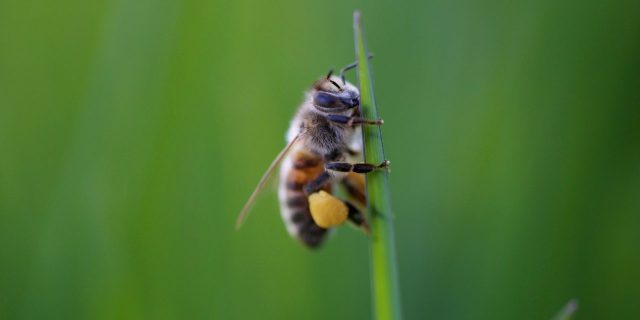02
Feb
Study on National Pollinator Declines Blames Pesticides, Pests, and Extreme Weather

(Beyond Pesticides, February 1, 2023) Honey bee declines in the United States are “primarily related” to pesticide exposure, parasitic mites, and extreme weather conditions, research published by Penn State scientists have determined. Publishing the results in Scientific Reports, the researchers aim to provide a national overview of the range of factors harming bee colonies. “Some previous studies have explored several potential stressors related to colony loss in a detailed way but are limited to narrow, regional areas,” said study co-author Luca Insolia, PhD. “The one study that we know of at the national level in the United States explored only a single potential stressor. For this study, we integrated many large datasets at different spatial and temporal resolutions and used new, sophisticated statistical methods to assess several potential stressors associated with colony collapse across the U.S.” The results reinforce calls from bee health advocates in the U.S. and around the world: eliminate toxic pesticide use, the lowest hanging fruit contributing to pollinator declines.
In order to create a more comprehensive national overview, geographers, entomologists, and statisticians all participated in the study, reviewing publicly available data on colony health, land use, weather, and other environmental factors over a five-year period from 2015-2021. “In order to analyze the data all together, we had to come up with a technique to match the resolution of the various data sources,” said Martina Calovi, PhD corresponding author of the study, and researcher at Penn State. “We could have just taken an average of all the weather measurements we had within a state, but that boils all the information we have into one number and loses a lot of information, especially about any extreme values. In addition to averaging weather data, we used an ‘upscaling’ technique to summarize the data in several different ways, which allowed us to retain more information, including about the frequency of extreme temperature and precipitation events.”
Results show spacio-temporal trends that are perhaps unsurprising to many beekeepers, but could help inform better beekeeping practices. For instance, colony losses from mites are found to be highest in the first quarter of the year, and then increase again during the third and fourth quarter in all regions of the country except the southeast. This generally follows the life cycle of Varroa destructor, which beekeepers aim to manage to low levels in the fall; failure to adequately manage fall mite populations increases risk of failure throughout the winter.
To better determine the primary factors resulting in colony declines, researchers consider a range of features, including weather related information, land use, climatic regions, years and quarters, as well as several stressors, such as mites, other pests and parasites, diseases, and pesticides. These factors are then weighted for their impact on colony loss to determine the primary contributing factors.
Factors like the year or time of year played a smaller role than researchers expected. “Our results highlight the role of parasitic mites, pesticide exposure, extreme weather events, and overwintering in bee colony collapse. We hope that they will help inform improved beekeeping practices and direct future data collection efforts that allow us to understand the problem at finer and finer resolutions,” said Francesca Chiaromonte, PhD, coauthor and professor of statistics at Penn State.
This is the latest study to begin to separate out the contributing factors to colony collapse at larger spatial levels. Research published by U.S. Geological Survey (USGS) scientists earlier this month found somewhat similar results when reviewing the factors owing to the decline of the western bumblebee, finding climate change and pesticides to be the primary culprit.
While the Varroa destructor is a serious, ongoing honey bee pest, it is important to emphasize that varroa levels themselves, and a colony’s fitness against their attack is a function not only of mite management but pesticide use in a surrounding region. Research published in Scientific Reports finds that realistic exposure to systemic neonicotinoid pesticides that bees are likely to encounter in the wild impairs the ability of honey bees to groom mites off their bodies, likewise increasing risk of viral infection.
A broad transformation of the food system is necessary to change the course of pollinator health. This includes not only eliminating the use of pesticides to prevent their direct and indirect harm to pollinator populations, but also the elimination of fossil fuels that contribute to extreme weather and the further spread of pests and diseases. These considerations should be part and parcel of every pesticide registered in the U.S., yet the federal government continues to ignore these positive policy proposals. Help bring greater attention to the need to take climate change seriously in the context of pesticide registrations sending a letter to EPA, USDA, and Congress today.
All unattributed positions and opinions in this piece are those of Beyond Pesticides.
Source:Scientific Reports, PSU press release










